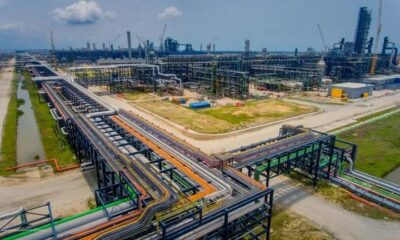
US natural gas prices have more than doubled since last year’s pandemic-induced slump. Prices surged in the second quarter of 2021 by 40 percent, registering the largest quarterly rise since the second quarter of 2016.
The US benchmark natural gas price at the Henry Hub has traded above $3.60 per million British thermal units (MMBtu) so far in July. Extreme heat, rising liquefied natural gas (LNG) exports, and lower than usual gas stocks in storage continue to support prices at the start of the third quarter.
Going forward, analysts expect higher volatility in prices as weather models and anticipated heat waves will be one of the key factors in determining price actions. Natural gas consumption in US electricity generation, however, is set to decline this year because of the much higher prices, which make coal more competitive. Coal-fired power generation is set for a short-term recovery this summer as higher prices of coal’s main fossil fuel competitor, natural gas, will discourage parts of gas-fired electricity generation.
Still, natural gas prices are currently at their highest since the middle of December 2018, driven by record US LNG exports, low domestic stock levels, and extreme weather both in the past winter and this summer.
Amid all this, natural gas production in the United States has stayed relatively flat in recent months, due to lower production of associated gas from oil-directed rigs.
Natural gas prices are expected to stay above $3/MMBtu in the coming two quarters. Downward pressure will likely emerge next year because of an expected rise in US natural gas production and a slowdown in export growth, the Energy Information Administration (EIA) said in its Short-Term Energy Outlook for July published this week.
Last week, US natural gas prices jumped amid a tight natural gas market and expectations of high demand for electricity in hotter than usual weather in many parts of the United States. The Henry Hub rally as a heatwave gripped the Pacific Northwest resulted in the highest price for the prompt futures in more than two years.
Expectations of cooler weather this week have weighed on natural gas futures, but the weekly natural gas inventory report from EIA was constructive and sent prices higher on Thursday.
The net injections into storage totaled 16 billion cubic feet (Bcf) for the week ending July 2, below the median analyst estimate of 27 Bcf and well below the five-year average net injections of 63 Bcf, the EIA said.
This week last year net injections into storage stood at 57 Bcf. As of July 2, working natural gas stocks totaled 2,574 Bcf, which is 190 Bcf lower than the five-year average and 551 Bcf lower than last year at this time.
The average rate of injections into storage so far in the refill season April-October is also lower, by 17%, compared to the five-year average.
For the whole refill season, the EIA sees injections 5% below the five-year average rate because record exports are set to outpace increase in natural gas production.
Rising natural gas demand outside the power sector and higher exports resulted in an average Henry Hub spot price of $3.25/MMBtu in the first half of 2021, also because of the brief spike in prices to $5.35/MMBtu during the Texas Freeze in February.
The Henry Hub spot price is set to drop from recent highs, the EIA forecasts in its July STEO. The average price for the third quarter is expected at $3.22/MMBtu, which will also be the average price for all of 2021, as per EIA’s latest estimates.
However, prices are expected to stay above $3.00/MMBtu for the rest of 2021, “driven by continuing record natural gas exports and rising demand for natural gas outside of the electric power sector amid relatively flat natural gas production.”
Next year, downward pressure from higher production and slowing export growth would lead to average Henry Hub spot price of $3.00/MMBtu in 2022, the EIA reckons.




 NEWS5 months ago
NEWS5 months ago
 NEWS5 months ago
NEWS5 months ago
 NEWS5 months ago
NEWS5 months ago
 WAR5 months ago
WAR5 months ago
 FINANCE5 months ago
FINANCE5 months ago
 INVESTMENTS5 months ago
INVESTMENTS5 months ago
 FINANCE5 months ago
FINANCE5 months ago


































